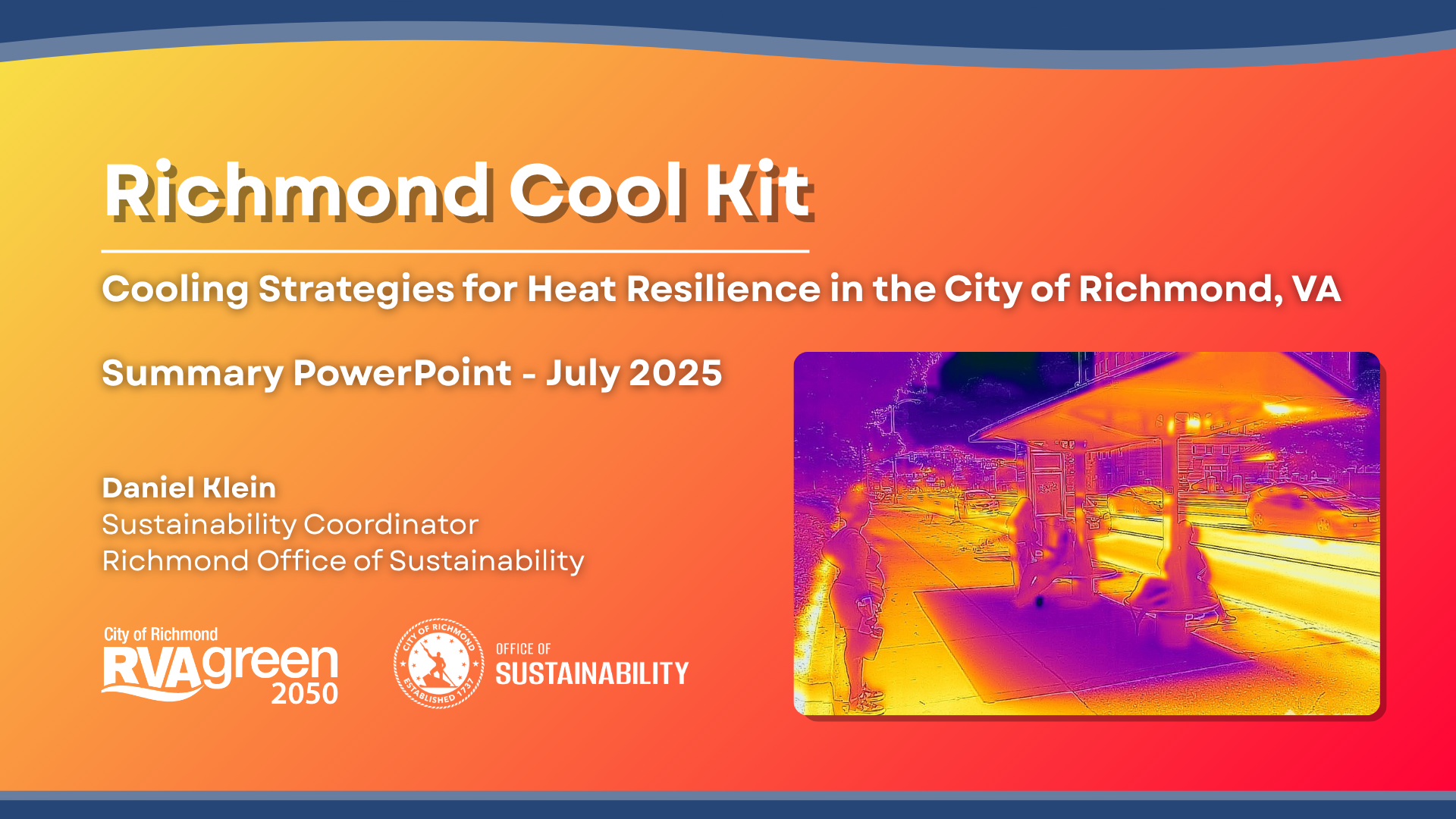
Richmond Cool Kit
The Richmond Cool Kit lays out twenty-five evidence-based cooling strategies that can reduce surface temperatures in urban and suburban communities across the City of Richmond. These strategies can help protect our natural environment, enhance connectivity across the City, and improve public health and safety.
These cooling strategies can be applied to publicly-owned properties, the public right-of-way, and privately-owned spaces. The Richmond Cool Kit is designed to support the work of City of Richmond project leaders as they plan, build, and maintain our built environment, and it is also a resource for the public. Community members can apply these strategies to their homes, businesses, and in their communities to reduce heat risk.
The Richmond Cool Kit also establishes a shared understanding of the causes and impacts of urban heat, outlines proven cooling strategies, and promotes community resilience to extreme heat and flooding. This document proposes four priority resilience goals:
Cool neighborhoods, homes, and businesses
Cool walking, biking, and transit infrastructure
Cool community spaces, parks, libraries, and schools
Increased climate resilience and well-being for all Richmonders
Cooling Strategies
This toolkit outlines 25 cooling strategies that can reduce the built environment’s contribution to urban heat and foster heat resilience across Richmond. These strategies can inspire new projects or they can be integrated into future City capital improvement projects (CIPs) or maintenance projects. These strategies apply to private property and can be deployed by homeowners, renters, businesses, organizations, and community groups. Refer to the Richmond Sustainability Design Standards for a deeper dive on these strategies.
Source: Daniel Klein
Street trees, reforestation, bioretention systems, mini-parks, and water features cool down neighborhoods by providing both shade and evapotranspiration cooling effects. By making the city more green and less grey, we can cool communities and reduce flooding.
Urban Greening
Source: Katie Brown
Shade sails, lightweight canopies, and awnings provide affordable and quick-to-implement heat relief. Built shade structures and strategic building design can provide long-term protection but require more time to design and implement.
Shade
Photo: Secure Solar Futures
Cool roof technologies, light-colored pavements, and heat-resistant materials reflect, rather than absorb, solar radiation, which can reduce surface temperatures by up to 50-70°F. Solar panels shade buildings while generating renewable electricity while green roofs reduce stormwater runoff and increase habitat for pollinators.
Smart Surfaces
Photo: Science Museum of Virginia
Depaving is the strategic removal and replacement of underutilized or unnecessary impervious surfaces such as parking lots, sidewalk squares, and wide streets. Once removed, these spaces can become green infrastructure, such as The Green at the Science Museum of Virginia. This formerly 381-space parking lot was depaved and converted into a 2-acre public park.






